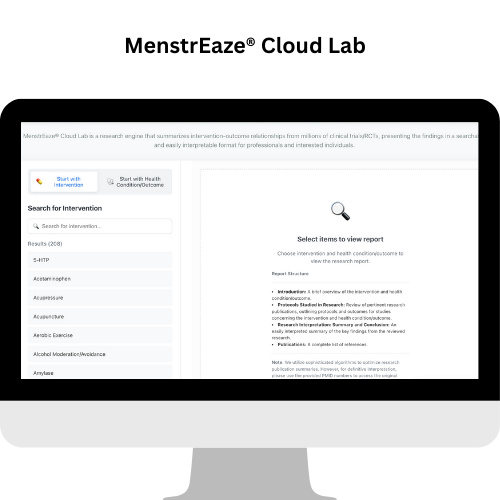Menstruation, a natural monthly occurrence for women, is often accompanied by a range of uncomfortable symptoms. These can include painful cramps that can disrupt daily life, general body aches, and even nausea. While various remedies exist, many women seek natural and dietary approaches to find relief during this time. Among these options, ginger rice stands out as a comforting and potentially beneficial food. Ginger, a spice with a long history of medicinal use, has been recognized for its therapeutic properties, particularly in addressing women's health concerns. Incorporating it into a simple dish like rice can offer a palatable and soothing way to potentially ease menstrual discomfort.
The Science Behind the Soothe: How Ginger Helps with Menstrual Symptoms
Numerous scientific investigations and reviews have explored the effectiveness of ginger in alleviating the symptoms associated with menstruation, particularly menstrual pain, also known as dysmenorrhea [1]. The consistency of these findings across various studies and health resources suggests a significant benefit. This isn't merely traditional wisdom; it is supported by evidence from clinical trials. The root of ginger's therapeutic effects lies in its bioactive compounds, such as gingerols and shogaols, which possess both anti-inflammatory and analgesic (pain-relieving) properties [1]. Understanding these components provides a scientific rationale for why ginger can be helpful. This knowledge moves beyond simply stating that ginger offers relief and delves into the biochemical reasons behind its efficacy, potentially paving the way for standardized ginger preparations for therapeutic use.
Research has even indicated that ginger's effectiveness in reducing menstrual pain can be comparable to that of common over-the-counter pain medications like ibuprofen and mefenamic acid [1]. This is a noteworthy finding for women who prefer natural alternatives to conventional pain relievers, especially considering that ginger may present fewer side effects compared to some medications [2]. Comparing ginger's ability to alleviate pain to standard medications provides a benchmark for its potential benefits and might encourage women to consider it as an initial approach for managing mild to moderate menstrual discomfort.
The primary way ginger is thought to ease menstrual discomfort is by inhibiting the production of prostaglandins [2]. Prostaglandins are hormone-like substances that play a significant role in inflammation and pain during menstruation by causing the uterus to contract. By interfering with their production, ginger can help reduce the intensity of these uterine contractions, thereby lessening the pain experienced. Explaining this biological mechanism makes it clearer how ginger achieves pain relief, lending more credibility and understanding to its use. This connection between ginger's action and the known cause of menstrual cramps offers a logical and scientifically sound explanation for its effectiveness. Furthermore, ginger may also contribute to relief by relaxing muscular spasms in the uterus [2]. This additional benefit suggests that ginger directly addresses the physical cramping sensation, which is a major source of discomfort for many women during their periods. Muscle relaxation can significantly alleviate pain, particularly the characteristic cramping pain associated with menstruation. Beyond pain relief, ginger has also been found to be effective in alleviating nausea and stomach upset [2], which are common symptoms that can accompany menstruation. This multi-faceted benefit, addressing both pain and other common menstrual issues, enhances ginger's overall value as a natural aid during this time.
Regarding how to best utilize ginger, some studies suggest that consuming it a few days before menstruation begins and continuing during the initial days of the period can be particularly effective [5]. The dosages used in research vary, but often range from 750mg to 2000mg of ginger powder per day. Providing this practical guidance on the timing and amount of ginger to consume makes this information more useful for the reader. However, it's important to acknowledge that the optimal dosage might vary from person to person.
Ginger Rice: A Simple Recipe with Powerful Potential
Incorporating ginger into your diet during your period can be as simple and comforting as making a bowl of ginger rice. Here's a basic recipe to get you started:
Ingredients:
- 1 cup jasmine or basmati rice, rinsed
- 1 tablespoon butter or neutral oil (like canola or vegetable)
- 1 tablespoon fresh ginger, minced or grated
- 1 ½ cups water or broth (vegetable or chicken)
- ¼ teaspoon salt (or to taste)
Instructions:
- Rinse the rice under cool water until the water runs clear. This helps remove excess starch for fluffier rice [23].
- In a small pot with a tight-fitting lid, melt the butter or heat the oil over medium heat [24].
- Add the minced or grated fresh ginger to the pot and sauté for about 1-2 minutes, or until fragrant [24]. Be careful not to burn it.
- Stir in the rinsed rice and cook for another minute, stirring occasionally [24].
- Pour in the water or broth and add the salt [23]. Bring the mixture to a boil.
- Once boiling, reduce the heat to low, cover the pot tightly with the lid, and simmer for 15-20 minutes, or until all the liquid is absorbed and the rice is tender [23]. The exact cooking time may vary depending on the type of rice used.
- Remove the pot from the heat and let it stand, covered, for 5-10 minutes [23]. This allows the rice to steam and become even more fluffy.
- Fluff the rice gently with a fork before serving [23].
This simple recipe provides an accessible and practical way for readers to incorporate ginger into their diet. There's something inherently comforting about a warm bowl of rice, especially during menstruation when comfort foods are often craved. The gentle warmth and subtle spice of the ginger can be particularly soothing during this time.
Beyond the Basics: Recipe Variations for Extra Period Support
To further enhance the potential benefits and cater to different preferences, you can explore several variations of the basic ginger rice recipe.
Adding a pinch of turmeric powder to the cooking liquid not only imparts a beautiful golden color but also introduces the anti-inflammatory properties of turmeric [14]. Studies have explored the positive effects of curcumin, the active compound in turmeric, on PMS symptoms, suggesting it could complement ginger's benefits.
For an extra boost of nutrients, consider incorporating cooked leafy greens like spinach or kale towards the end of the cooking process [20]. These vegetables are rich in iron and magnesium, which can be particularly beneficial during menstruation. Iron helps replenish levels that may be lowered due to blood loss, while magnesium can aid in muscle relaxation, potentially easing cramps.
For those who enjoy a more savory flavor profile, sautéing a clove or two of minced garlic along with the ginger can create a delicious ginger-garlic rice [23]. Garlic not only adds flavor but also offers its own set of potential health benefits.
Using chicken or vegetable broth instead of water to cook the rice can add a richer, more savory dimension to the dish [23]. Broth can also contribute additional nutrients, depending on the type used.
For a creamier and slightly sweet variation, consider using coconut milk instead of water for part or all of the cooking liquid, creating a coconut ginger rice [26]. This variation offers a different flavor profile that many find appealing and complements the spice of ginger well.
Nutritional Value of Ginger Rice: Fueling Your Body During Menstruation
Rice, the base of this dish, provides essential carbohydrates, which serve as the body's primary source of energy [20]. This energy is particularly important during menstruation when women may experience fatigue. Rice also contains some vitamins and minerals, including B vitamins, magnesium, iron, phosphorus, and potassium. Opting for brown rice over white rice can further enhance the nutritional value due to its higher fiber content [20]. Fiber plays a crucial role in regulating blood sugar levels and promoting healthy digestion, which can be beneficial during menstruation.
Ginger itself contributes more than just flavor; it offers antioxidant properties thanks to compounds like gingerols and shogaols [2]. Antioxidants help protect the body against cellular damage and contribute to overall well-being.
The approximate nutritional content of one serving of basic ginger rice (made with butter, ginger, water, salt, and jasmine rice) is outlined in the table below [25]:
|
Nutrient |
Amount per Serving |
% Daily Value* |
|
Calories |
241 |
|
|
Fat |
6g |
8% |
|
Saturated Fat |
4g |
19% |
|
Cholesterol |
15mg |
5% |
|
Sodium |
45mg |
2% |
|
Total Carbohydrate |
45g |
16% |
|
Dietary Fiber |
2g |
8% |
|
Total Sugars |
1g |
|
|
Protein |
4g |
7% |
|
Vitamin C |
17mg |
19% |
|
Calcium |
24mg |
2% |
|
Iron |
1mg |
4% |
|
Potassium |
72mg |
2% |
*The % Daily Values are based on a 2,000 calorie diet. Your daily values may be higher or lower depending on your calorie needs.
This table provides a general overview of the nutritional components, offering concrete data for those interested in the specific breakdown of the dish. It helps individuals understand the calorie, macronutrient, and some micronutrient content, which can be particularly valuable for those monitoring their dietary intake or with specific nutritional requirements.
A Taste of Tradition: Cultural Insights into Ginger and Women's Health
The use of ginger for women's health is deeply rooted in traditional medicine systems like Traditional Chinese Medicine (TCM) and Ayurveda [4]. For centuries, ginger has been valued for its ability to promote blood circulation, relieve spasms, and address various women's health conditions, including dysmenorrhea and supporting recovery after childbirth. This long-standing traditional use suggests a historical recognition of ginger's benefits for women's well-being.
In TCM, menstrual pain is often attributed to "cold," "qi," and "blood stagnation" in the uterus [8]. Ginger, with its warming properties, is believed to expel this cold, warm the channels, relieve stagnation in the abdomen, and even stop bleeding [8]. It is a key ingredient in many traditional herbal formulas, such as "Wen Jiang Tang" (Warm the Uterus Decoction), which has been used effectively to reduce pain in secondary dysmenorrhea [8]. This specific example illustrates how ginger has been intentionally incorporated into traditional remedies for menstrual issues.
Furthermore, in some Asian cultures, particularly Chinese culture, ginger rice (or ginger in other forms) is considered an essential food for women during the postpartum period [17]. It is believed to help the new mother recover by dispelling "wind" (a TCM concept related to imbalances after childbirth) and promoting blood circulation. This cultural practice highlights a broader appreciation for ginger's benefits for women's reproductive health beyond just menstruation.
Expert Corner: What Healthcare Professionals and Studies Say
Numerous meta-analyses and systematic reviews, which pool data from multiple studies, have consistently confirmed the effectiveness of ginger in reducing menstrual pain [1]. These high-level analyses often show that ginger is more effective than a placebo in alleviating pain and can even be comparable to non-steroidal anti-inflammatory drugs (NSAIDs) in its pain-relieving capabilities. This robust evidence from synthesized research strengthens the credibility of ginger as a natural remedy. Some studies have even indicated that ginger may have a more significant effect on dysmenorrhea compared to other commonly recommended supplements like Vitamin D and E [3]. Such direct comparisons highlight ginger's potential as a leading natural option for managing menstrual pain.
Naturopathic doctors, like Dr. Chelsea Cole, recommend ginger as a natural alternative to ibuprofen for menstrual cramps, explaining that it likely works by inhibiting the production of prostaglandins, the compounds that contribute to inflammation and pain [9]. This expert opinion from a healthcare professional adds practical support to the use of ginger. Similarly, nutrition experts like Dr. Michael Greger have discussed studies that directly compare the effectiveness of ginger to both placebo and ibuprofen in relieving menstrual pain, often finding ginger to be just as effective [19]. While acknowledging the existing evidence supporting ginger's benefits for menstrual cramps, resources like WebMD also note that ongoing research continues to explore its full potential [18]. This balanced perspective acknowledges the strength of current findings while recognizing the continuous nature of scientific discovery.
Important Considerations: Potential Side Effects and Precautions
While ginger is generally considered safe for most people when consumed in moderate amounts [2], it's important to be aware of potential side effects. Some individuals may experience mild issues like heartburn or stomach upset, especially if they consume high doses of ginger [2].
One significant precaution to consider is ginger's potential to have blood-thinning effects [10]. Therefore, individuals who are taking blood-thinning medications like warfarin or those with pre-existing bleeding disorders should exercise caution and consult with their healthcare provider before regularly consuming large amounts of ginger or taking ginger supplements. It is always advisable to seek professional medical advice in such situations.
As with any dietary change, moderation is key. It's recommended to consume ginger in reasonable amounts and pay attention to how your body responds. Women experiencing severe menstrual symptoms or those with underlying health conditions should always consult with their doctor for personalized advice and appropriate treatment options.
Conclusion
Incorporating ginger rice into your diet during your period offers a comforting and potentially effective way to manage common menstrual symptoms like pain and nausea. Supported by both scientific research and traditional use, ginger's anti-inflammatory and analgesic properties can provide soothing relief. By trying the simple recipe and exploring the variations, you can find a way to make this dish a supportive part of your menstrual wellness routine. Remember to listen to your body and consult with a healthcare professional if you have any concerns or underlying health conditions. Embracing natural approaches like dietary adjustments can be an empowering step towards managing your menstrual health and finding comfort during your cycle.





